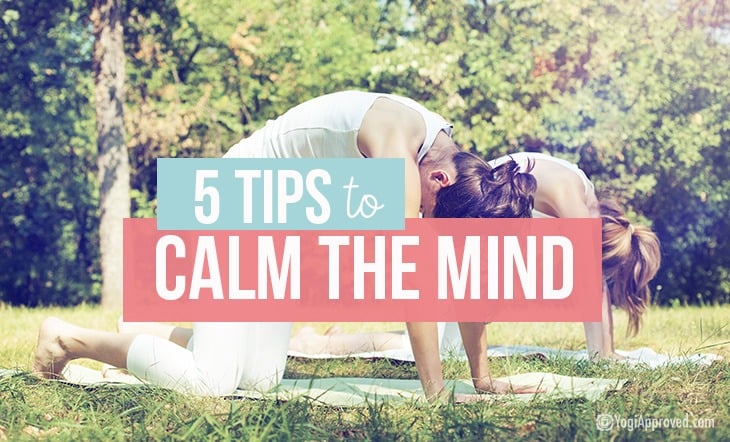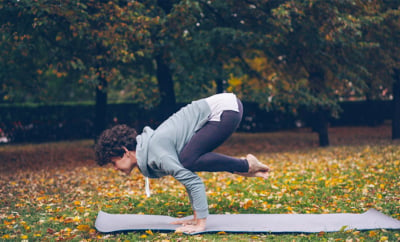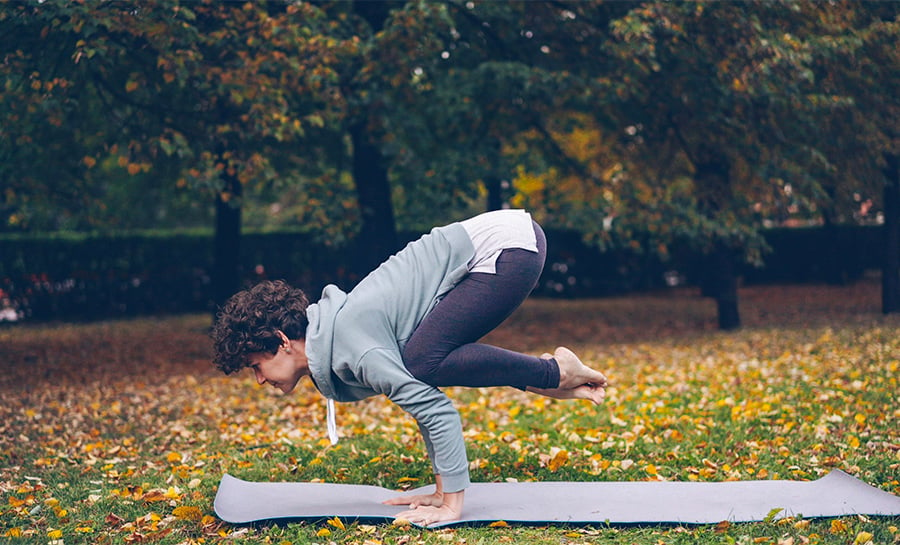5 Yogic Techniques to Create a Truly Calm Mind

calm the mind
The Yoga Sutras of Patanjali states:
“Yogash chitta vritti nirodhah. Tada drashtuh svarupe avasthanam.”
Translated from Sanskrit to English: Yoga is the removal of the fluctuations of the mind. Then one abides in the Self. Then the seer rests in its true nature.
Thus we can see that, in its purest sense, the comprehensive practice of yoga aims to find the true essence of our being through a process designed to create a calm mind and bring a sense of stillness and peace.
Essentially, we need to create that calm mind. But that’s much harder than it sounds! Luckily, yoga is a full toolbox of resources to help remove the fluctuations of the mind to balance and calm its ever-changing tides.
Struggle to remove the fluctuations of the mind? Here’s How to Control the Mind and Experience More Peace
5 Yogic Techniques for a Calm Mind
Here are five practical and useful yoga techniques to create a balanced, calm mind:
1. Conscious attention to the breath
Breath awareness is a fundamental part of every yoga practice. There are various techniques that can be used to increase the levels of calm and reduce the agitation of the restless mind.
Alternate nostril breathing, or Nadi Shodhana Pranayama, is particularly effective because it balances the left and right hemispheres of the body and brain and brings your life force energy, or prana, into balance.
How to do it:
- Cover your right nostril and breathe in through the left
- Hold the breath and then breathe out through the right nostril
- Breathe in through the right, hold, and finally breathe out through the left to complete one round
Do a minimum of three rounds (up to 15 minutes to begin with) to experience the calming effects of this breathing exercise.
Need some more breath awareness in your life? These 3 Pranayama Techniques Will Bliss You The F– Out!
2. Meditation on the pauses
In meditation, we often observe the breathing as a way of quieting the mind. A particularly effective method to find stillness in the mind is by focusing on the small pause that naturally occurs at the end of each inhalation and at the end of each exhalation.
In this moment, we will find the thought processes naturally diminish and it is easier to picture our mind as the clear blue sky on which thoughts arise like clouds.
This meditation technique was highly recommended in the Vijnana Bhairava Tantra, a wonderful translation of which can be found in Lorin Roche’s book called The Radiance Sutras:
“The way of experience begins with a breath
such as the breath you are breathing now.
Awakening into the luminous reality
may dawn in the momentary throb
between any two breaths.
The breath flows in and just before it turns
to flow out,
there is a flash of pure joy –
life is renewed.
Awaken into that.”
3. Repetition of a mantra
The repetition of a mantra, known in Sanskrit as Japa, is a powerful way to remove obsessive thinking and bring focus. This is particularly good when the mantra is one which has been given by a guru or teacher in a ceremonial way and thus infused with a particular energy.
This practice can be done in a meditation pose or while doing other tasks. Typically, practitioners would use a mala, or prayer beads, to keep track of the number of repetitions. In Tibetan Buddhism, it might be done while walking around a stupa or other holy place.
Repeating a mantra can can be an excellent technique, particularly for beginners, as it gives the practitioner a tangible focus.
Don’t have a mantra? Fear not! Use one of these 5 Morning Mantras for a Better Day
4. Cultivate mindfulness with Laya Yoga
Laya means absorption, and this technique is a focus on the “subtle sound” or Nada which can be heard as a slight ringing in the ears, especially when using earplugs during meditation.
We might hear the sound as far off running water or the hum of a bee. Whatever the sound, recognizing it as having a divine essence and allowing ourselves to fully connect with this sound is a very strong meditation technique that is also associated with the activation of kundalini energy.
Laya Yoga was one of the techniques mentioned at length in Hatha Yoga Pradipika (one of the oldest classical texts on Hatha Yoga) and is a method of becoming absorbed with the universal energy through a merging of the sense of self into this subtle energy vibration.
Need a brush-up on those old ancient yogic texts? Here’s a Brief Look Into the Origins of Yoga
5. Try Yoga Nidra to experience deep relaxation
The “yoga of sleep” is sometimes categorized as an extended final relaxation in an asana class, but when practiced in a regular and consistent way, Yoga Nidra can lead to lucid dreaming, astral travel, and states of profound realization.
The practitioner uses various techniques to tap into the immense power of the unconscious mind. Along the lines of a guided meditation, Yoga Nidra leads you into the rejuvenating and potent alpha brain state.
In this deep state of relaxation and awareness, everyday concerns become insignificant and calm abounds as you grow to better harness your ability to relax the mind and manifest your intentions.
Your Secret to a Balanced, Calm Mind
These are just a few examples of yogic techniques for calming the mind. Most any yoga practice will have a calming, balancing effect on your mind and body, and even a more demanding power yoga class – if paired with conscious breathing and conscious presence – will ultimately lead you to a calmer state of mind.
Have other yoga-based exercises or tips that you have found help you create a calm mind? Share in the comments below to help inspire your fellow yogis!


This Month's Letter
From the Editor
Monthly motivation and food for
thought from our founder.


























